|
Panasonic Lumix G X VARIO 35-100mm f/2.8 Power OIS - Review / Test Report - Analysis |
|
Lens Reviews -
(Micro-)Four-Thirds
|
|
Page 2 of 3

Distortion
Traditionally this is a bit of a weak point of MFT lenses because the system relies on software auto-correction here. You may argue, of course, that this is not relevant from a user perspective because all the applied corrections are applied "under the hood". This is also something that we can confirm - standard JPEGs or conventionally converted RAW files don't show a significant amount of distortion throughout the zoom range.
That being said it is still interesting to look a bit behind the scenes by using an "unsupported" RAW converter. This reveals a native barrel distortion level of about ~3.5% at 35mm which is rather heavy albeit not extreme. Therefore an auto-correction isn't overly "lossy". The issue has eased at 70mm (1.5%) and is basically negligible at 100mm.
If you move your mouse cursor over the image you can switch to the corresponding "raw" results.
Vignetting
At 35mm, the distortion auto-correction reduces the vignetting from its original characteristic (due to image stretching). In consequence there is, again, not much to worry about here. The light falloff remains visible at f/2.8 but it's not overly disturbing. When closing the aperture by one stop, the issue is essentially irrelevant already.
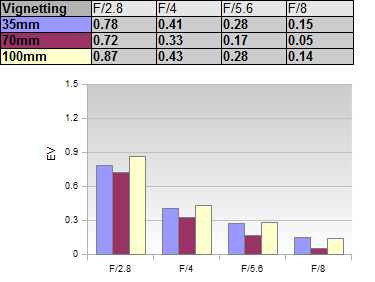 The "raw" vignetting is somewhat more pronounced at ~1.3EV (f-stops) @ 35mm f/2.8 and ~1.2EV @ 100mm f/2.8. Stopping down to f/4 is therefore advisable in critical scenes if you prefer to process your RAWs without applied distortion correction (if you can).
The "raw" vignetting is somewhat more pronounced at ~1.3EV (f-stops) @ 35mm f/2.8 and ~1.2EV @ 100mm f/2.8. Stopping down to f/4 is therefore advisable in critical scenes if you prefer to process your RAWs without applied distortion correction (if you can).
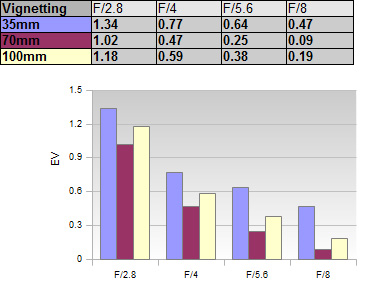
MTF (resolution)
Regarding the professional-grade scope, we had high expectations during the MTF analysis and the lens was able to fulfill these hopes - at least mostly. The primary strength of the Panasonic lens is a superb center resolution straight from f/2.8 and throughout the zoom range. There's just a minor drop at 100mm @ f/2.8 which is already recovered at f/4. The borders are generally very good followed by good to very good corners. As usual, diffraction is a limiting factor when stopping down thus unless needed you should stay below f/11, better below f/8 to get the most from your lens.
The field curvature is generally low. The centering quality of the tested sample was good (albeit you may spot an irregularity in the first of the provided sample images - this didn't show up during the tripod-based lab tests though).
Note: You may be surprised about the "odd" MTF curves below where the center performance starts to decrease straight after f/2.8 or f/4. This relates to the diffraction characteristic of the system. The empirical optimum is around f/2.8 on MFT, f/4 on APS-C and f/5.6 on full format cameras - unless the design itself is the limiting factor.
Please note that the MTF results are not directly comparable across the different systems!
Below is a simplified summary of the formal findings. The chart shows line widths per picture height (LW/PH) which can be taken as a measure for sharpness.
If you want to know more about the MTF50 figures you may check out the corresponding Imatest Explanations
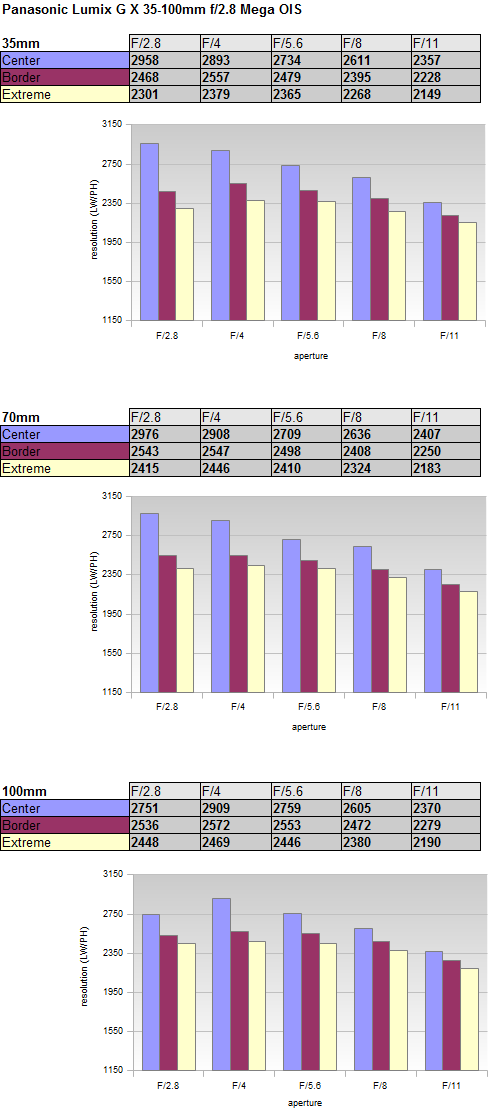
Chromatic Aberrations (CAs)
Lateral CAs (color shadows at the image borders) are low with an average pixel width of ~1px at f/2.8 and ~0.7px at medium aperture settings. It is somewhat unclear whether the CAs are auto-corrected - the RAW CAs are just a tiny bit higher. Thus Olympus users dont't need to worry as well - as of the time of this review, CA auto-correction is only available on Panasonic cameras and the new Olympus OM-D E-1.

Bokeh
One of the primary usage scenarios for a large aperture lens is to separate the main subject from its surroundings. In such an image the quality of the bokeh (out-of-focus blur) is of major significance.
The Panasonic Lumix G X 35-100mm f/2.8 Power OIS delivers pleasing results here. The rendition in the focus transition zone is very smooth and buttery in the critical background whereas the foreground blur is slightly nervous.
 Out-of-focus highlights have a circular shape but the discs show a slightly "onion-like" substructure - an effect that gets somewhat emphasized when stopping down. As usual the circular shape also deteriorates towards the image borders (see also one of the provided sample images).
Out-of-focus highlights have a circular shape but the discs show a slightly "onion-like" substructure - an effect that gets somewhat emphasized when stopping down. As usual the circular shape also deteriorates towards the image borders (see also one of the provided sample images).
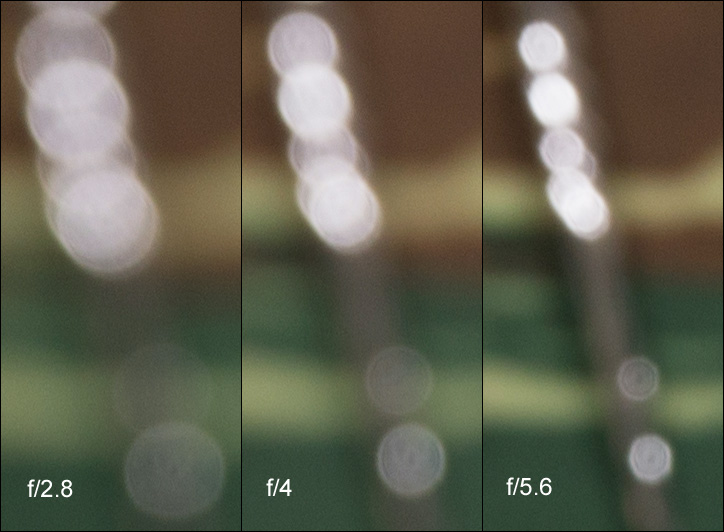
Bokeh Fringing / Longitudinal Chromatic Aberrations (LoCA)
Bokeh fringing is a common characteristic with fast glass. It's visible as halos of different colors in out-of-focus areas - magenta (red + blue) in front of the focus point and green beyond.
The Panasonic lens exhibits only a marginal amount of fringing at max. aperture - thus it is almost a super-apochromatic lens! This is very rare. The remaining traces are essentially gone at f/4.
|
Move the mouse cursor over the f-stop marks below to observe the respective LoCAs
|
|
|
|
|
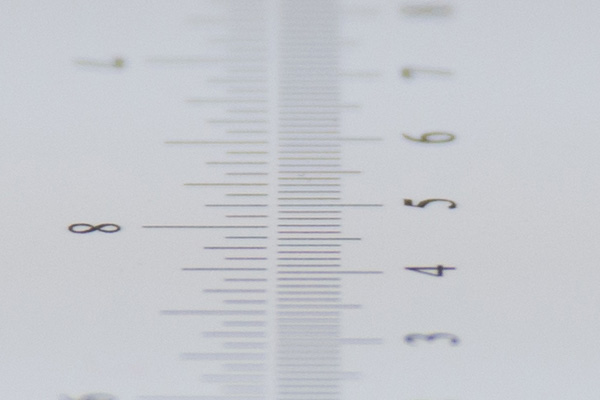
|
|